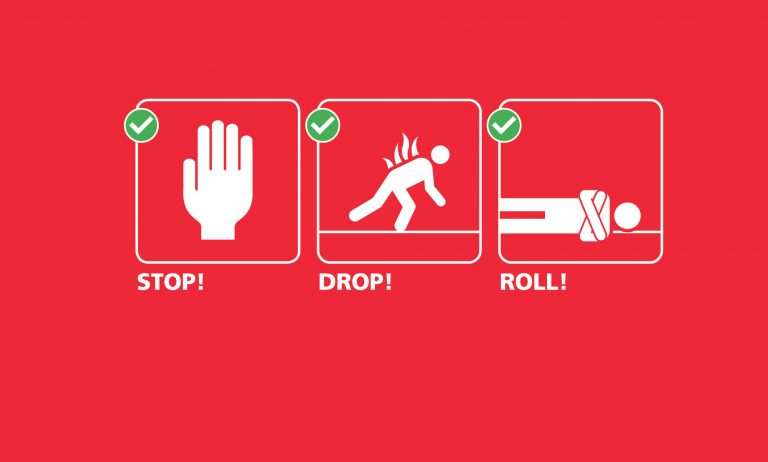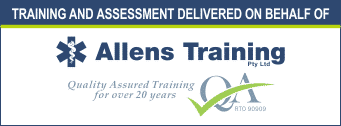Imagine this: you’re walking through a busy office when suddenly, a colleague collapses and becomes unconscious. What do you do? One of the key techniques you may learn in first aid training can help. It’s called is the recovery position. But why should you place an unconscious person on their side rather than leaving them on their back? Let’s dive into the details and learn about the recovery position, its benefits, and when to use it.
Table of Contents
Why Place a Casualty on Their Side?
When someone is unconscious, their muscles relax, including the ones in their throat and mouth. This can cause their tongue to fall back and block their airway, making it difficult for them to breathe. By placing the casualty on their side, you help keep their airway open, allowing them to breathe more easily. This position also helps prevent choking if they vomit, as gravity will help drain fluids helping prevent them from entering the lungs.
Here’s a simple way to remember it: the recovery position is like giving a lifeline to their lungs. By positioning them on their side, you’re ensuring that their airway is as clear and unobstructed as possible.
How to Place Someone in the Recovery Position
Let’s walk through the steps of placing someone in the recovery position:
What comes first
Before you get to placing them in the recovery position. Do this first:
- Ensure Safety: Before you do anything, make sure the area is safe for both you and the casualty. You don’t want to become a second victim!
- Check Responsiveness: Gently shake the casualty’s shoulders and ask loudly, “Are you okay? Can you hear me, Open your eyes” If there’s no response, send for help immediately.
- Open Airway: Gently tilt their head back slightly and lift their chin to open their airway. Check the mouth for any obvious obstruction or foreign bodies. You’ll need to put them in the recovery position briefly if fluids need to drain.
- Check Breathing: Look, listen, and feel for normal breathing. If they are breathing normally, proceed with the recovery position. If not, you’ll need to perform CPR.
How do to it
Kneel beside the casualty, near their torso.

Remember to look after your own back by keeping it straight, and avoid twisting.
Place the casualty’s arm furthest from you at a right angle to their body, palm facing up.
Bring the nearest arm across their chest and place their hand onto their furthest shoulder.
Grasp the closest leg just above the knee and pull it up, keeping the foot flat on the ground, bending the leg at the knee.

Carefully roll the casualty away from you by pushing on their bent knee and shoulder. Or you might grab a handful of clothing, as a ‘handle’. (Rolling the casualty away from you helps you avoid kneeling in a potential vomit puddle).
Adjust the upper leg so that both the hip and knee are at right angles. Place the upper foot forward onto the ground, just in front of the lower knee. This helps create a stable base and prevents the casualty from rolling further forward onto their face.

Tilt the head back to ensure the airway remains open. Position the upper hand under the chin to help keep the head stable.
Monitor: Remain with the casualty, and closely monitor their condition while you wait for help to arrive.
Voila! You’ve successfully placed the casualty in the recovery position.
When Shouldn’t You Use the Recovery Position?
While the recovery position is a fantastic tool, there are certain situations where leaving a casualty on their back might be more appropriate. Let’s explore a few scenarios:
Suspected Spinal Injury
If you suspect the casualty has a spinal injury, such as after a fall from a height or a car accident, moving them could cause further harm. In this case, it’s best to leave them on their back and avoid moving them unless absolutely necessary. Call emergency services and wait for professional help. While waiting continuously monitor the casualty’s breathing and keep their head and neck supported and stable.

Performing CPR
If the casualty is not breathing normally, they need CPR. In this situation, keeping them on their back is the only way to perform chest compressions and rescue breaths effectively. Remember, CPR will be your priority when there’s no normal breathing.
Head Injury with Bleeding
In cases where the casualty has a head injury with significant bleeding, you might need to keep them on their back to monitor their condition and apply pressure to the wound. The recovery position can be used later once the bleeding is under control.
Why You Should Enrol in a First Aid Course
Understanding and being able to perform the recovery position is just one part of the first aid puzzle. Signing up for a first aid course with My First Aid Course Brisbane will give you the skills and confidence to tackle all sorts of emergencies. Our experienced trainers deliver top-notch, nationally recognised training, so your certification is good to go anywhere in Australia.
And here’s a fun fact: we’re the highest-reviewed training provider in Brisbane! Our courses are not only practical and engaging but also tailored to fit the needs of both individuals and businesses. Whether you’re a complete newbie or just looking to brush up on your skills, we’ve got you covered.
Conclusion
The recovery position is a simple yet vital first aid technique that can save lives. By placing an unconscious casualty on their side, you help keep their airway open and reduce the risk of choking. Remember, there are specific situations where this position might not be appropriate, such as suspected spinal injuries or the need for CPR.
Arming yourself with first aid knowledge is empowering and can make a real difference in emergencies. So why wait? Enrol in a first aid training course with My First Aid Course Brisbane today and become a lifesaver in your community. After all, being prepared is the best way to ensure the safety of those around you.






